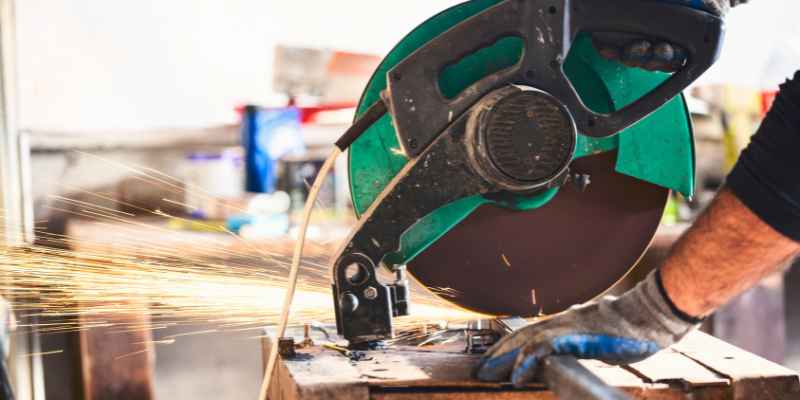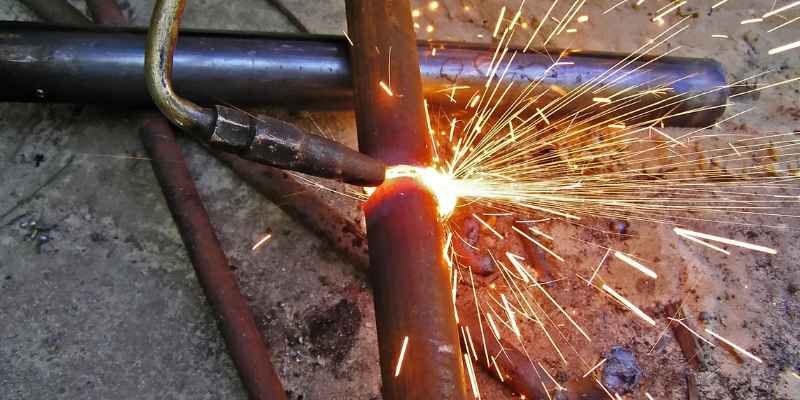To cut metal at home, use a metal-cutting blade on a circular saw or angle grinder. Ensure safety equipment is worn.
Cutting metal at home can be a practical and cost-effective way to complete various DIY projects or repairs. With the right tools and techniques, you can achieve precise and clean cuts on different types of metal, such as steel, aluminum, or copper.
Whether you are a hobbyist or a professional, understanding the proper methods for cutting metal at home can help you efficiently tackle your tasks. By following some simple guidelines and safety precautions, you can easily master the art of metal cutting and enhance your home improvement skills.
1. Choosing The Right Tools
1.1 Types Of Metal Cutting Tools
The first step in cutting metal at home is to determine the right types of tools needed for the job. Consider the following options:
- Hacksaw: Ideal for small, precise cuts on thin metals.
- Angle Grinder: Perfect for tougher metals and bulk cutting.
- Tin Snips: Great for cutting thin sheet metal with ease.
1.2 Factors To Consider In Tool Selection
When selecting the tools for cutting metal, keep these factors in mind:
- Material: Ensure the tool is suitable for the type of metal you are cutting.
- Thickness: Choose a tool that can handle the thickness of the metal.
- Accuracy: Consider the precision required for the cuts you plan to make.
- Safety: Always prioritize safety features and precautions when selecting tools.

2. Safety Precautions
When cutting metal at home, safety precautions are crucial to prevent accidents or injuries.
2.1 Wear Appropriate Safety Gear
- Always wear safety goggles to protect your eyes from metal shards.
- Gloves are essential to shield your hands from sharp edges and heat.
- Ensure to wear ear protection to minimize noise exposure while cutting metal.
2.2 Set Up A Safe Work Area
Create a clutter-free work area with ample space to move freely around the equipment.
Keep flammable materials away from the cutting zone to prevent fire hazards.
2.3 Secure The Material And Tools
Fix the metal securely using clamps to prevent slipping during cutting.
Keep all tools sharp and in good condition to ensure clean and precise cuts.
3. Cutting Techniques
4. Maintenance And Care
Start of section: 4. Maintenance and Care
Maintaining and caring for your metal cutting tools is essential to ensure their longevity and optimal performance. Proper maintenance practices not only extend the life of your equipment but also enhance safety during operation. Below are the key aspects of maintenance and care that you should adhere to when cutting metal at home.
4.1 Cleaning And Lubricating Tools
Regular cleaning of cutting tools is crucial to prevent the accumulation of metal shavings, dust, and debris. A clean tool not only ensures precise cuts but also reduces the risk of malfunctions.
Additionally, lubricating moving parts and blades is vital to minimize friction and heat generation during the cutting process. When lubricating, use the recommended products and techniques specific to the type of metal cutting tool you are using to ensure optimal performance and longevity.
4.2 Sharpening Blades And Discs
Proper maintenance of metal cutting tools involves sharpening the blades and discs regularly. Sharp blades and discs facilitate smooth and efficient cutting, while dull ones can lead to jagged edges and imprecise cuts.
Utilize specialized sharpening tools and techniques suitable for your specific cutting equipment to maintain the sharpness of blades and discs. Regular inspection and sharpening can significantly enhance the cutting quality and extend the life of your tools.
4.3 Storing Tools Properly
Post-use, it is essential to store your metal cutting tools properly to prevent damage and ensure their longevity. Clean the tools thoroughly, removing any metal residues, and store them in a dry and secure place to prevent rust and corrosion.
Consider using protective cases or covers for the tools to shield them from environmental elements and accidental damage. Adhering to proper storage practices is paramount in preserving the functionality and lifespan of your metal cutting equipment.
End of section: 4. Maintenance and Care
5. Troubleshooting Common Issues
5.1 Overheating Of Tools
When cutting metal at home, one common issue you may encounter is the overheating of tools. This can lead to decreased cutting efficiency and even potentially cause damage to the cutting tools. To prevent this, always ensure that the cutting tools are sharp and in good condition before use. Additionally, using the appropriate cutting speed and lubrication can help dissipate heat and prevent overheating.
5.2 Uneven Or Jagged Cuts
If you find that your metal cuts are turning out uneven or jagged, it could be due to a few factors. One reason may be improper blade alignment or a worn-out blade. Another reason could be an incorrect cutting speed. Ensure that the blade is properly aligned and in good condition, and adjust the cutting speed as needed to achieve smooth and even cuts.
5.3 Excessive Sparking
Excessive sparking during metal cutting can be a sign of using the wrong type of blade or improper cutting technique. To address this issue, make sure to use blades specifically designed for cutting metal, and practice proper cutting techniques such as maintaining a steady hand and consistent pressure. This will help minimize sparking and improve the overall cutting process.
6. Project Ideas For Metal Cutting
Discover creative project ideas for cutting metal at home. From DIY metal sculptures to personalized jewelry, unleash your creativity with these inspiring metal cutting projects. With the right tools and techniques, crafting metal pieces can be a rewarding and fulfilling experience.
With the right tools and techniques, cutting metal at home opens up a world of creative possibilities. Whether you’re a DIY enthusiast or a professional craftsman, here are some exciting project ideas that you can explore:
6.1 Creating Custom Metal Art
Let your imagination soar by producing stunning custom metal art pieces. With precise metal cutting skills, you can fashion intricate designs and shapes that reflect your unique style. Create wall art, sculptures, garden decorations, or even personalized signs to add a touch of elegance and creativity to any space.
6.2 Building Metal Furniture
Why settle for ordinary when you can design and build your own metal furniture? Cut metal pieces to create sturdy frames for chairs, tables, or shelves. Experiment with different finishes and materials to achieve the perfect blend of functionality and aesthetic beauty. Craft one-of-a-kind pieces that will impress your friends and make your home truly stand out.
6.3 Constructing Metal Structures
Take your metal cutting skills to the next level by constructing robust metal structures. From pergolas and gazebos to arbors and trellises, you can transform your backyard into a stunning outdoor oasis. Not only does it add value to your property, but it also provides a functional space for outdoor gatherings and relaxation. Let your creativity shine through by incorporating unique designs and architectural elements that suit your personal taste.
7. Resources For Further Learning
7.1 Online Tutorials And Courses
Online tutorials and courses provide practical guidance for cutting metal at home.
7.2 Books And Publications
Books and publications offer in-depth knowledge on metal cutting techniques and safety measures.
7.3 Joining Diy Communities
Joining DIY communities gives access to valuable insights from experienced metalworkers.
Explore these resources to enhance your skills in cutting metal effectively and safely.

Frequently Asked Questions Of How To Cut Metal At Home
What Are The Essential Tools For Cutting Metal At Home?
To cut metal at home, essential tools include a hacksaw, angle grinder, metal shears, and a plasma cutter. Each tool serves different purposes and ensures efficiency and precision in metal cutting.
How Can I Safely Cut Metal Without Specialized Equipment?
You can safely cut metal at home using a hacksaw, which is easy to use and doesn’t require specialized skills. Additionally, using a metal cutting blade on a circular saw can also provide an effective method for cutting metal at home.
What Are The Safety Precautions For Cutting Metal At Home?
When cutting metal at home, always wear safety goggles, gloves, and a face mask to protect against metal particles and sparks. Ensure proper ventilation in the workspace and secure the metal piece firmly before cutting to avoid accidents.
Can I Use A Jigsaw For Cutting Metal At Home?
Yes, using a jigsaw with a metal-cutting blade is suitable for cutting thin sheets of metal at home. It provides precision and control, making it ideal for intricate cuts and curved shapes in metal materials.
Conclusion
To conclude, cutting metal at home can be a challenging but rewarding task. By following the right techniques, maintaining safety measures, and using the appropriate tools, you can achieve precise and professional results. Remember to double-check your measurements, wear protective gear, and take breaks when necessary.
With practice and patience, you’ll become proficient in metal cutting, allowing you to tackle various DIY projects with confidence. Happy cutting!


